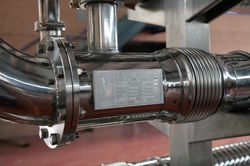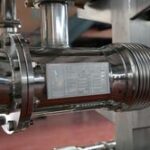Aseptic technology development has marked a turning point in the food industry. Thanks to these technologies, products as common as milk, fruit juices, vegetable creams, etc; can now be processed and packaged whilst retaining their initial properties: organoleptic qualities and nutritional properties. Shelf life is extended and products can be easily distributed.
The idea behind aseptic technology is to stabilize the product enzymatically and microbiologically by exposing it to high temperatures for short periods. Cooling takes place immediately after so that vitamins and fresh product qualities are preserved.
Different heating systems have been developed depending on the products qualities and acidity.
UHT systems are used for low acid products with a pH greater than 4.6 such as milk, soybeans, etc.
For products of high acidity, with a pH lower than 4.6, such as fruit juices and some vegetables; pasteurization systems are most commonly used.
The pasteurization of dairy products differs from other pasteurization systems as only certain microorganisms are destroyed, and there is no need to reach complete sterilization. This is why pasteurized dairy products need to be stored in a refrigerator.
We categorise aseptic technologies into three different groups:
- Aseptic processing: pasteurization and UHT systems
- Aseptic storage – used for storing products in factories or for industrial distribution – aseptic tanks or drums
- Aseptic Packaging: In Carton, PET, Aseptic Bag
MachinePoint has an unreachable reputation for installing complex aseptic processes. We have over 25 years of experience installing aseptic lines for the dairy, beverage and agro-food industries.
Key concepts in aseptic technologies
Aseptic technologies are methods and systems designed to maintain a microorganism-free environment in industrial applications.
Aseptic technologies help ensure that products are free of microorganisms by eliminating or inhibiting their growth during processing and packaging. This is achieved through sterilization of equipment, materials, and work environments, as well as the use of physical and chemical barriers to prevent contamination.
When considering the use of aseptic technologies, it is important to follow some best practices. For example, proper training of personnel, regular maintenance of equipment and systems, constant monitoring of sterilization processes, and implementation of rigorous quality controls are crucial. Additionally, it is essential to select equipment and materials that meet the hygiene and safety standards required for each specific application.
Aseptic packages are containers designed to preserve the sterility of products during storage and transportation. A common example of an aseptic package is the Tetra Pak, used for products such as milk, fruit juices, and soups. These packages are made with materials that ensure the sterility of the contents, allowing them to be stored at room temperature for extended periods without the need for refrigeration or the addition of preservatives.





